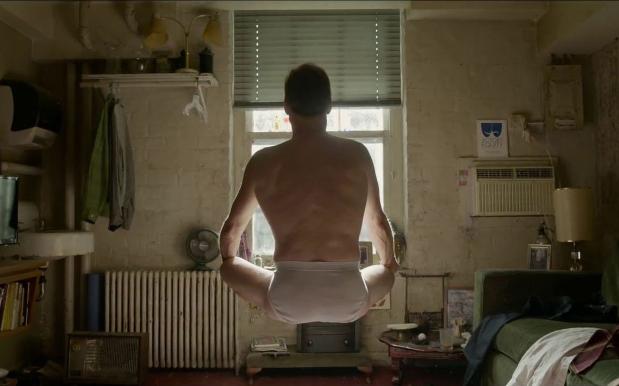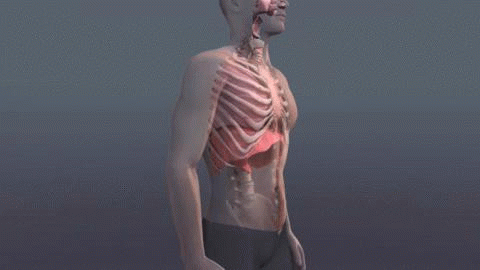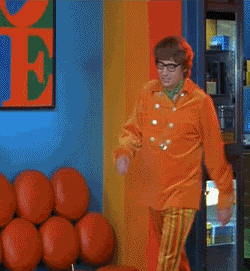
Breathing. It’s the first thing you did when you were forcefully expelled from your birth giver’s womb, and it’ll be the last thing you do before you bite the dust.

You rn and forever, until you cease to exist in this unforgiving terrestrial realm.
The average person at rest takes around 16 breaths per minute – and if you live long enough to make it to octogenarian status, you’ll have taken a whopping 672,728,000 breaths in your lifetime.
It’s something a lot of us seldom think about. But you might actually be doing it… Incorrectly.

Try taking a moment right now to tune into your breathing. Where’s it coming from? Your belly? Your chest? Your butthole?
Shallow breathing (breathing from the chest as opposed to the lower lungs) is pretty common. It can be the result of stressful situations like being stuck in traffic, or working to a deadline. It happens when the fight-or-flight response is activated. For those of us with anxiety disorders, this state can be almost constant.
Another misstep is breathing from your mouth, instead of your nose. Think of it this way – mouth breathing is like unfiltered tap water, nose breathing is like Voss.
Your nose holes are smaller than your mouth hole, and therefore, when you exhale through your nose, it takes longer for the air to escape your lungs, which gives them more time to extract oxygen.
And those are just the basics – we’ve put together this lil starter kit of YouTube tutorials + explanations to help you tune into your breath, and take one step closer to supreme living.

But first. What are some of the benefits of practicing breathing from your diaphragm?
+ Reduced anxiety and depression
+ Lower and stabilised blood pressure
+ Increased energy levels
+ Muscle relaxation
+ Decreased feelings of stress
+ Working the diaphragm helps massage your liver, stomach and intestines, giving these organs rhythmic balance
+ It activates the lymphatic system, which helps to get the bowels working and your poo poo expelled
Belly Breathing
Also known as diaphragmatic or abdominal breathing, belly breathing is done by contracting the diaphragm, a muscle located horizontally between the chest cavity and stomach cavity. Air enters deeply into the lungs and makes the belly expand during this kind of breathing. Technically, we should be breathing like this all the time.
Let the odd pairing of Common and Colbie Caillat explain it in this ep of Sesame Street while Elmo loses his furry-faced shit:
You can do this one anywhere relatively undetected – here’s another (more serious) tutorial that demonstrates how to do it horizontally.
Alternate Nostril Breathing
In yogic tradition, it’s known as Nadi Shodden Pranayama (nadi = subtle energy channel, shodhan = cleaning, pranayama = breathing technique).
Basically, you want to close one nostril with your index finger, breathe through the other nostril, then switch it up to exhale. Most yoga teachers will tell you that it’ll harmonise the left and right hemispheres of the brain – and since the breath is directly correlated to brain function, it makes a fair whack of sense. Here’s how to do it:
Energising Breathing
Sit on the ground in a comfy position (cross-legged is preferable, if you can manage that) with a neutral spine you find easy to maintain. You should exhale and inhale forcefully through your nose, at a rate of one second per cycle. It should come purely from your diaphragm – so only your belly should be moving. Check out this woman doing it below:
Keeping a straight posture is super important in all of these exercises, as it allows a clear, uninterrupted path for the breath. This one can feel a little intense, but if you start to feel light-headed or dizzy, give it a rest.
Bee Breathing
Technically called Bhramari Pranayama (bhramari = a kind of Indian bee, pranayama = breathing technique), Bee Breath is a great one for calming down a racing mind.
How to do it? Sit in a comfortable position in a quiet room and close your eyes. Place your index fingers on the cartilage between your ear and your cheek (the knobbly bit near your ear hole). Take a deep breath in through your nose, and as you exhale, gently press the cartilage. As you do this, make a high-pitched humming bee-like noise. If that’s just confused the living daylights out of you, watch how to do it below:
It’s a particularly handy one as you can do it almost anywhere – at your desk, on the train commute or, if you’re worried people are gonna think you’re a kook, you can do it in the privacy of your own home.

Remember: It’s important you get your breathing right. THE POLICE are watching you.
Photo: Birdman.



